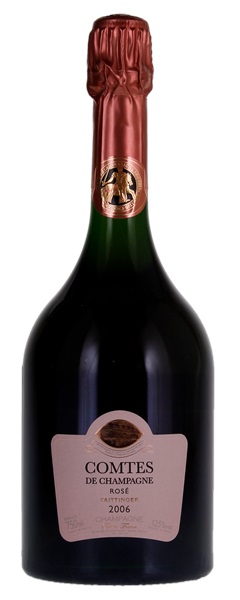Estimate

Aromas of wild cherries, rose water, cherries and citrus lead to a palate with fresh red cherry. Bold and rich, this will develop handy savoriness with age..
A lovely Champagne, offering a rich and expressive palate of dried strawberry and white peach fruit, with toasted hazelnut, pastry, candied ginger and lemon curd flavors set in a fine and elegant frame. Long and creamy on the satiny finish.
. Intensely perfumed, Pinot-inflected aromatics carry through the mid-palate and finish as the 2006 shows off its depth and pure energy. Veins of chalky minerality give the red berry and cranberry flavors an extra kick of energy.
Lovely, pure and fresh on the nose, with spicy sweet cherry aromas and red berry flavors, this is a rich and potent, full-bodied and firmly structured Rosé with nice purity and freshness. The finish reveals a sweet intensity and good length.
Cool and almost delicate aromas of various red berries, in particular raspberry and strawberry, that are trimmed in pretty floral and yeast nuances..heightened sense of refinement continues onto the utterly delicious and ultra-refreshing flavors